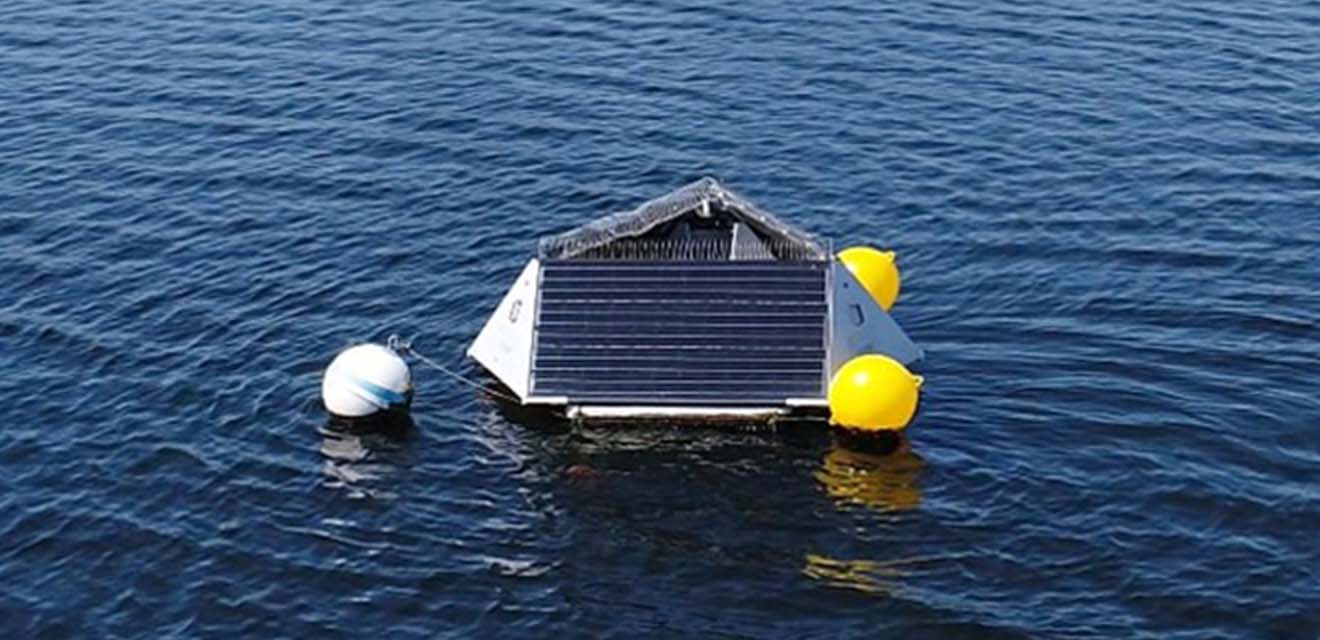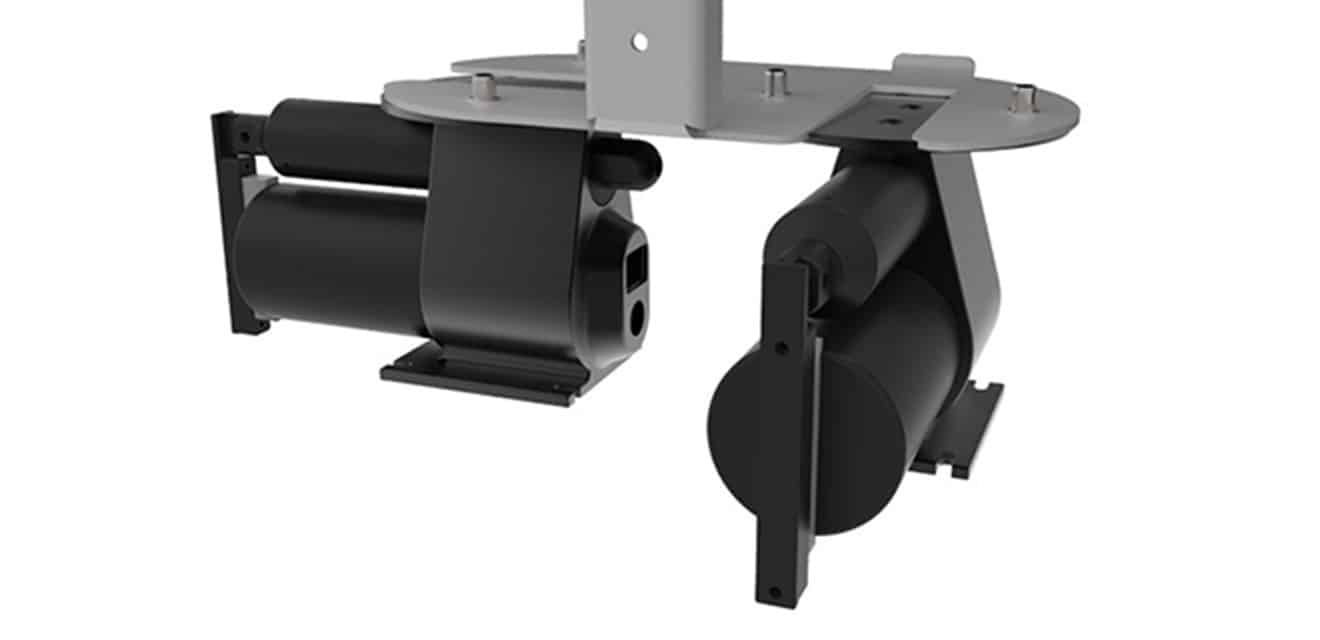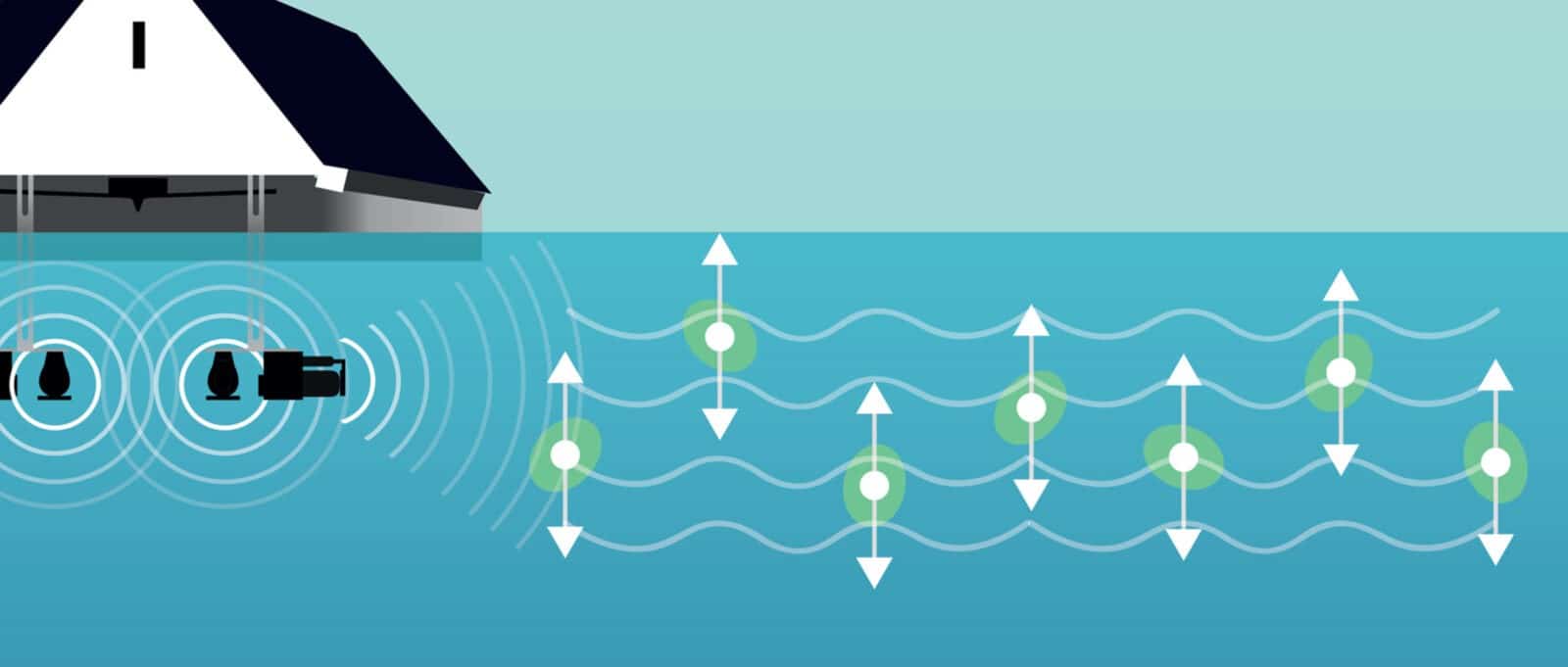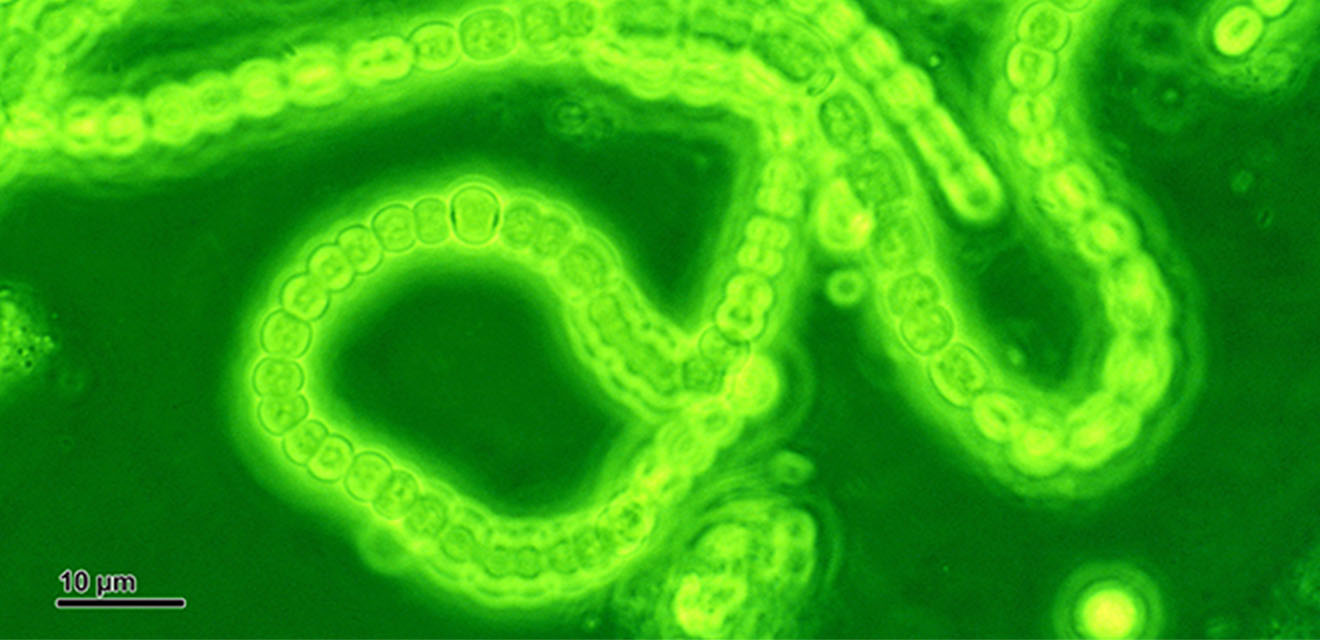In short
- Controlling algae with low-power ultrasound is a well-established method that’s been in existence for years;
- It’s an environmentally-friendly alternative to harsh chemicals, safe for the aquatic life;
- Our ultrasonic technology was developed in cooperation with European universities and research institutes and is effective in controlling a broad range of algal species.

Ultrasonic algae control
Algal blooms reduce light penetration, deplete oxygen in water, and release toxins. All these factors negatively impact fish, plants, and the aquatic life. When there’s an imbalance in the ecosystem, it’s important to control algae growth. To achieve this, low-power ultrasound at frequencies higher than the upper audible limit of human hearing (22 kHz) can be used.
This is an environmentally-friendly alternative to chemical usage, harmless to the aquatic ecosystem. Ultrasound can be used in both freshwater and maritime environments. By managing the rate at which algae proliferate, it’s possible to improve water clarity, leading to plant growth which in turn increases oxygen levels in water.
Benefits of low-power ultrasound

Our algae control devices use low-power ultrasound (5W per transmitter). Typically, other ultrasonic methods produce cavitation due to the high-power ultrasound output. Cavitation is a phenomenon in which high power ultrasound causes the formation of bubbles that implode upon themselves, causing intense heat and pressure, which can destroy cells. This treatment has a harmful impact on the ecosystem. Additionally, due to the high power-requirements, it’s not possible to apply this method for treating lakes or any other large water bodies.
Effects of ultrasound on algae blooms
To understand how ultrasound waves target blue-green algae (cyanobacteria), it’s important to know how they grow. Cyanobacteria use gas vesicles for buoyancy and depth regulation. During the day, algae perform photosynthesis at the water surface, using carbon dioxide and dissolved nutrients from their surroundings to produce oxygen and polysaccharides. At night, or during high UV irradiation events, cyanobacterial cells empty their gas vesicles (vacuole), sink to the bottom and use oxygen and nutrients (nitrogen and phosphorus) to produce biomass.
To control algae, our ultrasonic units emit specific ultrasonic programs into the water. The sound waves spread through the water columns over hundreds of meters and create a sound layer at the top, affecting algae’s buoyancy regulation and fixing them in the water column. Algae cells sink to the deeper and darker layers of the water column, where they can’t photosynthesize anymore and eventually die off due to lack of light.
Algae are highly adaptive organisms. They can adapt during seasons, and can survive even in extreme conditions. For this reason, it’s critical to continuously change the ultrasonic frequency programs based on the current algae species and specific water conditions.
Typically, ultrasonic algae control doesn’t significantly alter the initial algae counts in a water body. However, ultrasound directly affects the vertical distribution of algae throughout a water column, therefore directly influencing the ability of algae to form a bloom. Generally, these blooms can be reduced up to 90% in concentration, compared to no treatment.

- LG Sonic ultrasound technology creates a sound layer in the top layer of the water.
- The ultrasound affects the buoyancy of the algae, fixing them in the water column.
- Due to a lack of sunlight and nutrients, algae sink to the bottom and die off.
- Algae are degraded by bacteria and decompose over time without releasing any toxins.
FAQ
What happens when the algae die?
Our ultrasound technology affects algae’s buoyancy regulation, fixing them in the water column. Due to a resources, algae will sink and eventually decompose.
Does the ultrasound cause the release of toxins?
Our ultrasound does not break or lyse the cells. As such, toxins aren’t released into the water. As the ultrasound treatment is generally a two-to-three week process in which the growth of new algae is being prevented, you’ll see a gradual reduction in toxin concentration once the ultrasound is introduced. The ultrasonic treatment will result in a lower release of toxins compared to no treatment or to the usage of chemicals.
Is your ultrasound safe for aquatic life?
Our ultrasonic algae control units were developed in cooperation with several academic institutions and research institutes as an alternative to harsh chemical treatments. Universities such as The University of Portsmouth, UK; UNICET Catania, Italy; and BOKU, Austria have all concluded that the LG Sonic systems are safe for fish and zooplankton.
Which algae types can be controlled with ultrasound?

The ultrasound can control common types of green and blue-green algae, such as spirogyra, microcystis, and anabaena.
How long does it take before algae die?
Each algae species react differently to the ultrasonic treatment. On average, it takes two to three weeks for the treatment to take effect.
